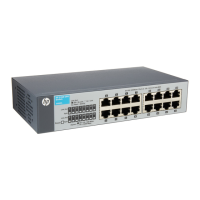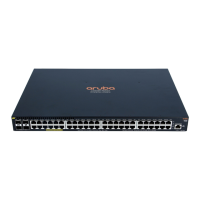8
Item
Command history buffer for a user
line
Command history buffer for all
HyperTerminal or Telnet, use the up
or down arrow key (↑ or ↓).
In Windows 9x HyperTerminal, use
Ctrl+P and Ctrl+N.
• (Method 2.) Use the repeat command.
For more information, see "
Repeating
commands in the command history
buffer for a line."
How to set the buffer
size?
Use the
history-command
max-size
size-value command in user line view to set
the buffer size.
By default, the buffer can store up to 10
commands.
You cannot set the buffer size.
By default, the buffer can store up to
1024 commands.
How to dis
buffer?
Setting the buffer size to 0 disables the
buffer.
You cannot disable the buffer.
Command buffering rules
The system follows these rules when buffering commands:
Buffering a command in the exact format in which the command was entered. For example, if
you enter an incomplete command, the buffered command is also incomplete. If you enter a
command with a command keyword alias, the buffered command also uses the alias.
If you enter a command in the same format multiple times in succession, the system buffers the
command only once. If you enter a command in different formats multiple times, the system
buffers each command format. For example, display cu and display current-configuration are
buffered as two entries but successive repetitions of display cu create only one entry.
To buffer a new command when a buffer is full, the system deletes the oldest command entry in
the buffer.
Repeating commands in the command history buffer for a
line
You can recall and execute commands in the command history buffer for the current user line
multiple times.
To repeat commands in the command history buffer for the current user line:
Repeat commands in the
for the current user line.
repeat
[
number
] [
count
times
] [
delay
seconds
]
This command is available in any view.
However, to repeat a command, you must first
enter the view for the command.
To repeat
multiple commands, you must first enter the
view for the first command.
This command executes commands in the
order they were executed.
The system waits for your interaction when it
repeats an interactive command.

